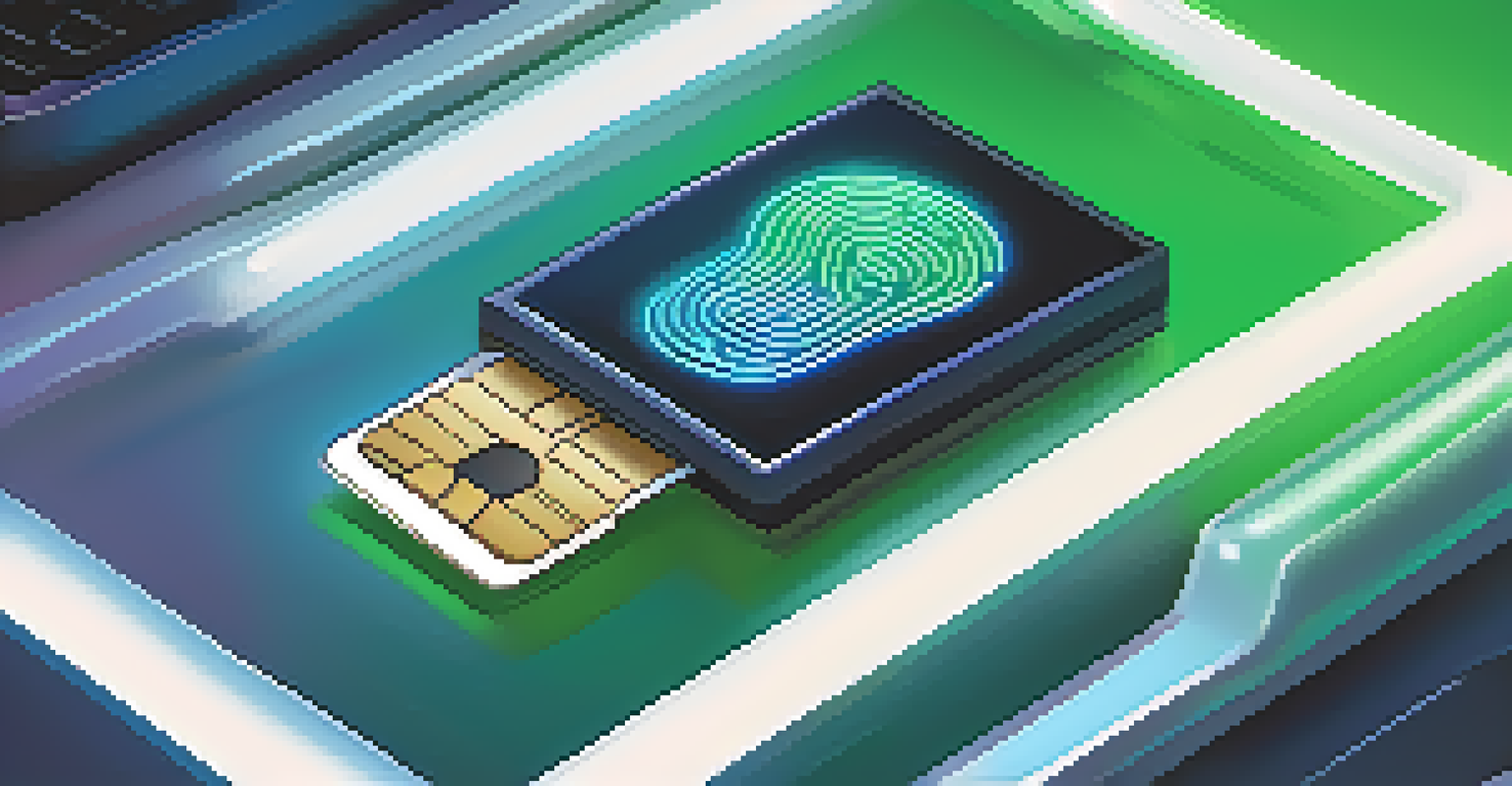Implementing Access Control in Ethereum Smart Contracts

Understanding Access Control in Smart Contracts
Access control is a crucial aspect of smart contracts on Ethereum. It essentially dictates who can do what within the contract, ensuring that only authorized users can perform certain actions. Think of it like a security guard at a club, checking IDs to make sure only the right people get in.
Security is not a product, but a process.
In the context of Ethereum, access control helps protect assets and data from unauthorized access, which is essential for maintaining trust and security. Without proper access restrictions, anyone could manipulate contract functions, leading to potential vulnerabilities. Just like locking your front door keeps your home safe, access control does the same for your smart contracts.
Developers must consider which roles are necessary and how to implement them effectively. This involves defining user roles such as admins, users, or auditors, and establishing rules around what each role can do. By carefully planning these roles, developers create a more secure and efficient contract.
Types of Access Control Mechanisms
There are several methods to implement access control in smart contracts, each with its advantages and disadvantages. Common mechanisms include role-based access control (RBAC) and ownership models, which provide different levels of flexibility and security. Imagine choosing between a key card system or a fingerprint scanner for building access; each has its own pros and cons.

RBAC allows developers to assign permissions based on roles, which makes it easy to manage access at scale. For instance, a contract could define roles like 'admin', 'manager', and 'user', each with specific rights. This is particularly useful for larger projects with multiple stakeholders who need different levels of access.
Importance of Access Control
Access control in smart contracts ensures that only authorized users can perform specific actions, safeguarding assets and data from unauthorized access.
On the other hand, ownership models, like the one based on the OpenZeppelin library, use a single 'owner' address to control contract functions. While this is simpler, it can also lead to centralized control, which may not align with the decentralized ethos of blockchain technology. Balancing simplicity and decentralization is key to effective access control.
Implementing Role-Based Access Control (RBAC)
Implementing RBAC in Ethereum smart contracts involves defining roles and mapping them to specific functions. This can be done using Solidity, the programming language for Ethereum, where developers create modifiers that check for permissions before executing functions. It’s like adding a bouncer to your club who ensures that only VIPs can enter the exclusive area.
The best way to predict the future is to invent it.
For example, a contract might have functions like 'addUser' and 'removeUser', which only an admin can execute. This not only protects sensitive functions but also provides clarity on who can perform what actions. Having clear role definitions helps avoid confusion and potential conflicts among users.
One popular library to assist with RBAC is OpenZeppelin, which provides secure and community-vetted implementations. Using such libraries can save time and reduce the risk of introducing vulnerabilities. Think of it as using pre-tested equipment for a mission; it increases your chances of success.
Best Practices for Access Control in Smart Contracts
When implementing access control, following best practices can significantly enhance security and functionality. Start by minimizing the number of functions that require elevated privileges; less exposure means less risk. Just like in a company, the fewer people who have access to sensitive information, the better.
Additionally, regularly audit your contracts for vulnerabilities and potential exploits. This proactive approach can identify weaknesses before they become a problem. Consider it similar to routine maintenance on a vehicle; it ensures everything is running smoothly and helps prevent breakdowns.
Types of Access Control Mechanisms
Various access control methods like role-based access control (RBAC) and ownership models offer different levels of flexibility and security for smart contracts.
Another best practice is to implement multi-signature wallets for critical functions, which require multiple approvals before execution. This adds an extra layer of security and decentralization, as it reduces the risk associated with a single point of failure. Just like a committee making decisions, it ensures that no one person has unilateral power.
Challenges in Access Control Implementation
Implementing access control in smart contracts isn't without its challenges. One major issue is the balance between security and usability; overly strict controls can hinder functionality and user experience. Think of it like having too many security checks at an airport; while it enhances safety, it can also frustrate travelers.
Another challenge is ensuring that access controls are properly tested and audited. Bugs or oversights in your access control logic can lead to severe vulnerabilities, potentially allowing unauthorized users to exploit your contract. Regular testing, similar to how software undergoes updates and patches, is vital for maintaining security.
Moreover, as contracts evolve, so do user roles and responsibilities. Keeping access control updated to reflect these changes can be cumbersome. It's essential to have a flexible system that allows for easy adjustments as your project grows, ensuring that your access control remains relevant and effective.
Real-World Examples of Access Control in Action
Several successful projects on Ethereum have effectively implemented access control to safeguard their smart contracts. For instance, DAOs (Decentralized Autonomous Organizations) often use RBAC to manage member permissions and voting rights. This ensures that only designated members can make decisions or execute sensitive actions, reflecting a democratic approach.
Another example includes token distribution contracts, where only authorized users can mint or transfer tokens. By restricting these functionalities, projects can prevent malicious actors from manipulating token supply, which can severely impact a project's reputation and value. It’s akin to a trusted bank that only allows certain transactions to protect its customers.
Challenges in Implementation
Balancing security with usability is a key challenge in implementing access control in smart contracts, as overly strict measures can hinder user experience.
These examples illustrate the importance of thoughtful access control implementation in maintaining trust and security within the Ethereum ecosystem. As more projects launch, the need for robust access control mechanisms will only grow, reinforcing the idea that security should always be a priority in blockchain development.
Future Trends in Access Control for Smart Contracts
The landscape of access control in smart contracts is continually evolving as technology advances and new challenges arise. One trend is the increased use of decentralized identity solutions, which aim to give users more control over their personal data. This shift could lead to more dynamic and user-centric access control models, enhancing the overall security of smart contracts.
Another emerging trend is the integration of AI and machine learning to monitor and adapt access controls in real-time. These technologies could analyze user behavior patterns and detect anomalies, automatically adjusting permissions as needed. It’s like having a smart thermostat that learns your preferences and optimizes your home’s temperature; it enhances comfort while ensuring efficiency.

As the Ethereum ecosystem expands, the importance of robust, adaptable access control will remain a focal point for developers. By staying ahead of trends and continuously innovating, developers can create more secure and user-friendly smart contracts, ultimately contributing to the growth and acceptance of blockchain technology.